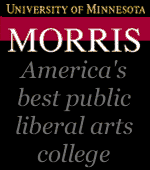What's the monetary value of a delusion?
So the bun shaped like Mother Teresa was stolen. I'm wondering how the police report this kind of thing—misdemeanor, felony, major heist? It's an old piece of stale bread that would, in a rational world, be tossed out in the trash. Do the delusions of its owner add value to it?
Trackback url: http://tangledbank.net/index/trackback/3637/


I hope I'm not taking this more seriously than it deserves, but for purposes of the level of larceny the "fair market value" of the stolen property is normally used. Typically, the higher the value of the property stolen, the higher level of the crime. All property -- stuff -- is presumed to have at least nominal value. Stealing items of only nominal value is usually called "petit" larceny. Petit larceny also applies when the value of the property stolen is more than nominal but fairly low (below, say, $1,000). Thefts of property of more substantial value are usually called "grand" larceny (a higher-level crime than petit larceny).
Determining fair market value is sometimes easy. Property stolen from stores is usually valued at retail. In other cases, valuing property is more difficult, but the process is similar to how an appraiser would value any property: You identify the pertinent market and ask what the item would likely -- realistically -- sell for in that market. If there is no market, or the property stolen is essentially unsaleable, then it has only nominal value and the crime is petit larceny. Likewise if the FMV simply cannot be determined with any precision. "Sentimental" value does not usually count. So the "delusions of the owner" have no effect. (However, there are sometimes statutes which address thefts of particular kinds of property. For example, the theft of a credit card might be defined as grand larceny even though the value of the card itself is nominal, or similarly the theft of a pet might be a higher level of larceny than the pure market value of the animal would otherwise support. It is possible -- but I don't know -- that there could be statutes setting particular levels of seriousness for the theft of "religious" objects.)
For a "curiosity" such as this bun, there may (or may not) be a market value which can be determined. One might, for example, seek to discover if other, similar, artifacts have been bought and sold and at what levels. (Checking eBay, for example.) Mrs. Tilton is on-track with her analogy to art objects.
Fair market value is a "fact." There is a FMV or their isn't, and the FMV of an object is determinable (within a range) or it isn't. While the delusions of the owner may not affect FMV, if "delusions" result in people being willing to pay more than the intrinsic value for an object, that would count.
Phillip Johnson's textbook on criminal law would probably have more on this....